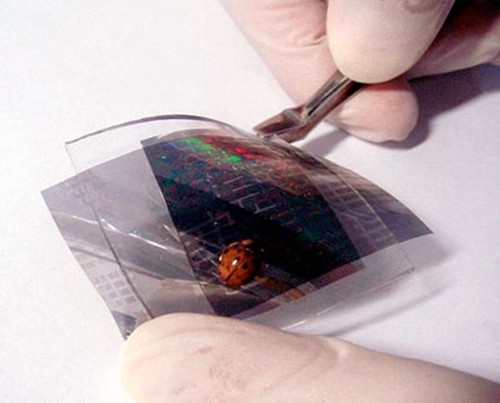Will Robots Get Touch-Sensitive Artificial Skin?

Researchers of the Seoul National University’s Multiscale Biomimetic Systems Laboratory revealed a new biomimetic electronic skin. It is a super sensitive skin that might finally help develop medical prostheses with a sense of touch. They took its cue from the signal transduction systems found in the ear, intestines, and kidney — nanoscopic hairs that interlock and produce signals by rubbing one another when their base membranes dent, ripple, or twist.
The electronic skin features two sheets of polyurethane acrylate; the sheets (9-13 centimeters) are molded onto dense arrays of minute polymer hairs (each 100 nanometers in diameter and 1000 nm tall), coated with a layer of platinum and bonded to a basement membrane. The current is conducted between layers and the resistance changes as the total contact area between the meshing hairs differs. A touch, push, or twist of the basement membrane makes the interlocked nanohairs rub and bend, and the changing current shows what’s going on. The smart device can also differentiate a push, a rub, and a twist. The researchers claim, that “nano-interlocking mechanism requires no complex integrated nanomaterial assemblies or layered arrays, thus allowing a simple, cheap, yet robust sensing platform for high-performance”.
Via:gizmag.com
| Tweet |










